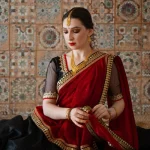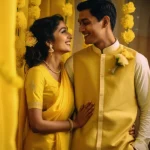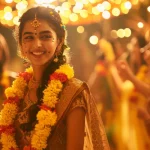04 Jul, 2024


Indian wedding photography requires a unique approach due to its vibrant colors, rich traditions, and diverse ceremonies.
Here are some practical hacks to elevate your Indian wedding photography:
Preparation and Planning
- Understand the Rituals: Familiarize yourself with the sequence of events and rituals involved in different types of Indian weddings (Hindu, Sikh, Muslim, etc.). This helps you anticipate key moments and prepare accordingly.
- Scout Locations: Visit the venue(s) ahead of time to identify the best spots for different shots—ceremony, portraits, group photos, etc. Pay attention to lighting conditions and potential distractions.
- Coordinate with the Couple: Have a detailed discussion with the couple about their expectations, preferred styles, and must-have shots. This ensures you capture their vision accurately.
Equipment and Settings
- Gear Up: Use a variety of lenses (wide-angle, telephoto, prime) to capture different perspectives. Fast lenses (with wide apertures like f/1.8 or f/2.8) are beneficial in low-light conditions typical of indoor venues.
- Adjust White Balance: Indian weddings often feature colorful attire and décor. Adjust white balance settings to ensure accurate color reproduction under varied lighting, especially during outdoor ceremonies or under artificial lights.
- Shoot RAW: Capture images in RAW format to retain maximum detail and flexibility during post-processing, especially important for adjusting exposure and white balance in mixed lighting situations.
Techniques and Composition
- Candid Moments: Indian weddings are filled with emotional moments. Capture candid shots of interactions, laughter, and spontaneous expressions to convey the atmosphere authentically.
- Focus on Details: Highlight intricate details of attire, jewelry, mehendi (henna), and decorations. These details hold cultural significance and add depth to the wedding story.
- Group Photos Strategy: Organize large group photos efficiently by using a step ladder for higher angles and ensuring everyone is visible. Communicate clearly to keep group sessions organized and swift.
Lighting and Timing
- Golden Hour: Utilize the golden hour (shortly after sunrise or before sunset) for soft, flattering light that enhances outdoor portraits and couple shots.
- Use Reflectors and Diffusers: Manage harsh sunlight or indoor lighting by using reflectors to bounce light and diffusers to soften it. This helps in achieving even illumination and avoiding harsh shadows.
- Be Ready for Varied Lighting: Adapt quickly to changing lighting conditions during different ceremonies and venues. Use fill flash or off-camera flash techniques for balanced exposure.
Post-Processing
- Preserve Skin Tones: Pay attention to skin tones during editing to maintain their natural warmth and richness, especially across diverse skin tones commonly found in Indian weddings.
- Highlight Colors: Enhance the vibrancy of traditional attire and decorations while ensuring they remain true to their original hues. Use selective editing techniques to draw attention to key elements.
- Deliver Quickly: Indian weddings often involve multiple events over consecutive days. Aim to deliver a sneak peek or a few edited images promptly to keep excitement high and reassure clients.
Cultural Sensitivity
- Respect Traditions: Understand and respect cultural sensitivities and traditions. Be mindful of religious ceremonies and rituals, seeking permission before photographing intimate moments.
- Build Rapport: Engage with family members and guests respectfully. Building rapport helps in capturing genuine emotions and encourages cooperation during group photos and candid shots.
- Capture the Essence: By integrating these approaches, you can capture the essence and beauty of Indian weddings while ensuring a memorable experience for the couple and their families.
Connect with CYC Events:
Website: www.cycevents.in
Email: connect@cycevents.in
Call: +91 33 4813 7994, 9147054648






